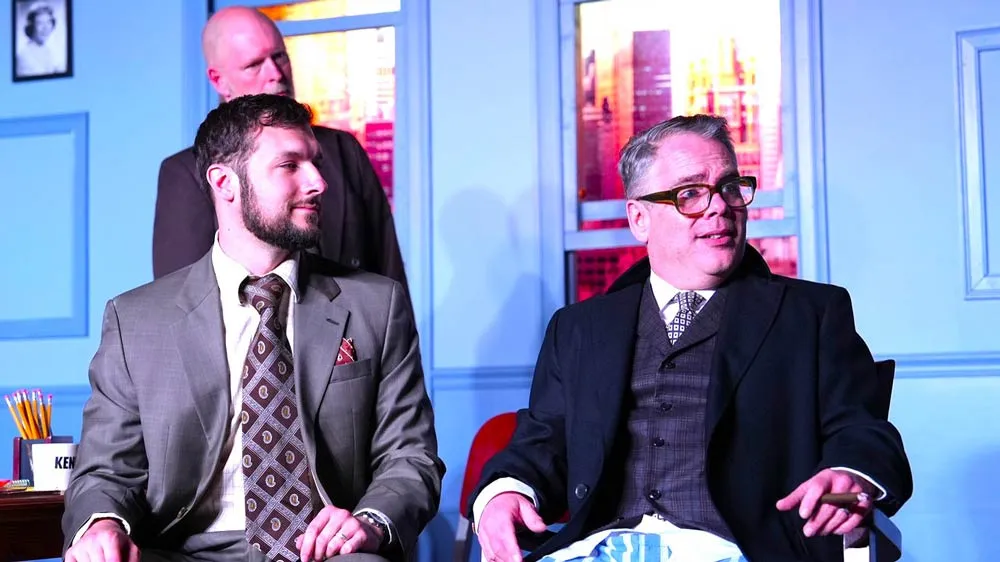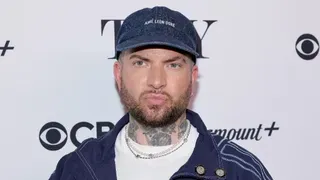July 20, 2015
NY Men's Fashion Week: Last Look
Matthew Wexler READ TIME: 5 MIN.
The men's turn is up.
New York Fashion Week has always celebrated the glamour of women's fashion but has relegated menswear to a supporting role. This week, building on a growing public appetite for menswear, the industry put on the first stand-alone men's fashion week in New York in nearly two decades (a brief attempt fizzled in the late '90s.)
Here are some highlights of New York Fashion Week: Men's, which concluded last week..
JOHN VARVATOS WRAPS UP THE WEEK WITH A ROCKER'S VIBE
Varvatos closed men's week with a show of killer rock hair, chunky boots and dandy stripes worthy of Keith Richards, just one of the many rock legends he's dressed over the years.
Varvatos, an agitator for New York to add a men's season, stuck close to his music roots, but more specifically he paid homage to a slice of rock history in the '70s when Fleetwood Mac, Jimmy Page and Richards were among UK acts to embrace a more bohemian Southern California style, ala Laurel Canyon.
In tailored jackets and a striped duster coat, Varvatos rigged some knits to look like animal skin with touches of metallic thread. He put silk-linen sleeves on a burnished lambskin jacket and rendered more traditional suit striping entirely in silk.
The New Yorker, by way of Detroit, was happy to be home. He last showed in New York eight years ago before heading out to Milan, his fashion week of choice ever since.
"It feels great to be back," Varvatos said in a backstage interview before the show. "Being in Milan, it was really just about timing. Fashion Week here in New York isn't until September, and that puts us three or four months after everybody else. But being in Milan really helped us grow our business. We've built a following there."
Since founding his cool-guy company in 2000, Varvatos has become more than just a music junkie. He started a namesake record label last year with Republic Records, hitting the charts with the Zac Brown Band. Albums from Andrew Watt and the Nashville band Tyler Bryant & the Shakedown are next.
And he proved earlier this year that you really can go home again, opening a store in his native Detroit along a once-grand fashion street, Woodward Avenue.
"I always wanted to open a store in Detroit, and they were talking about us going to a mall, but I couldn't go back and be in a mall," he said. "I wanted to be downtown. I was so turned on by the youthfulness of what was happening. It was like the beginnings of Brooklyn or Berlin with all these young people moving there because they smelled something interesting happening."
Of all the people he's known - Page and fellow Detroiter Alice Cooper are his friends - of store openings to come in San Diego and New York, of the people he's dressed, from Kiss and Richards and Iggy Pop to Jack White and Imagine Dragons and Dave Grohl, doing business in Detroit is up there in meaningful life moments.
"It was one of the most emotional things I've ever done, opening that store," Varvatos said. "It was the way the city treated us, the way we were welcomed there."
AT ORLEY, FAMILY-INSPIRED FASHION
The up-and-coming Orley brand is a family label, and this doesn't simply mean that the three designing Orleys are related (Alex and Matthew are brothers, and Matthew is married to Samantha.) It also means their design inspirations often come from family, too.
For their spring 2016 men's collection, marked by some sumptuous crocheted knitwear, the trio was inspired by the Orley brothers' parents.
"All our collections tend to be nostalgic," explained Alex Orley, the younger of the two brothers, after the brand's presentation on Thursday. "This one is about my mom and my dad and how they were when they met, which was at my dad's 15-year high school reunion, in suburban Michigan."
"They were really different people when they met," Alex said; Mom was more liberated, and dad "a little more straight and narrow." The designers tried to incorporate both characteristics into their collection, but also to "make it feel really modern, take it out of the '70s context," Alex said.
One of their goals was "to do knitwear, but in a freer way than we've done it before." Indeed, the most striking pieces in the collection were several elegant hand-crocheted tops in an azure or ivory Japanese silk that, Alex said, took 97 hours of work - each. "They're essentially couture," he said. There was a crochet jacket and a crochet crewneck and a couple of tees, too, each of which took 75 hours. "It's always been really important for us to showcase the range of techniques in knitwear," he said.
The intricate, delicate garments looked great on the hipster young models wearing them, but would the consumer go for it? "We generally find that the guys who come to us directly want special pieces," he said. "There are a lot of brands that make really beautiful cashmere sweaters. And we do too, but I think you need to have something more than that to say, to be telling an impactful story. And for us the only story that we know is a personal one."
Like many menswear designers, Orley is happy to see the ascension of U.S. menswear to its own New York Fashion Week.
"I think it means that there's a wealth of talent in New York that is ready to sort of step up onto a bigger stage," he said.
POLO RALPH LAUREN: CLOTHES TO WEAR ALL THE TIME
Walking into the airy, wood-paneled Polo Ralph Lauren showroom on Madison Avenue felt like entering a stage set, where all the actors were very stylish, clean-cut young men.
Stationed around the room were small groups of these men - models, of course - each group meant to display a different stage of a young man's week, from very casual to dressy, from a hike in the woods to a party. An overriding theme: These are the everyday clothes that a man should wear all the time.
Or, as the designer's show notes described it: "Iconic pieces are updated for the modern man, blending details from the worlds of tailored, technical and rugged to create a cool, fresh, contemporary look."
Outdoorsy looks included cargo pants in olive or tan and worn-in jeans, faded plaid work shirts, and camo jackets or pants. Athletic wear included jackets and pants made of technical nylon. There was outerwear for all forms of weather.
For a hybrid effect, a windbreaker-style jacket was cleverly hidden inside (and attached to) a sleek, tailored blazer, well suited for a city walk on a blustery day.
For dress, there were classic Lauren suits, but with a slimmer silhouette for a more contemporary feel. And for black tie, try blue tie: A tuxedo came in navy, adding a slight touch of casual to a formal look.
Matthew Wexler is EDGE's Senior Editor, Features & Branded Content. More of his writing can be found at www.wexlerwrites.com. Follow him on Twitter and Instagram at @wexlerwrites.



